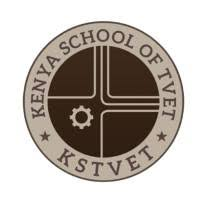Electrical and Electronic Principles and Technology
3. Transformers
3.2. Principle Operation of Transformers
By the End of This Section, You Will Understand:
-
✅ The principle of operation of a transformer
-
✅ How the output voltage relates to the secondary winding
-
✅ How transformers are connected in circuits
-
✅ What a centre-tapped transformer is and how it works
⚙️ 1. Principle of Operation of a Transformer
A transformer works on the principle of electromagnetic induction — specifically Faraday’s Law — which states:
A changing magnetic field in a coil of wire induces a voltage in another nearby coil.
Key points:
-
Only works with AC supply.
-
Primary winding receives AC input and generates a changing magnetic field.
-
This magnetic field passes through a magnetic core and cuts the secondary winding, inducing a voltage in it.
-
No electrical connection between the primary and secondary coils – power is transferred magnetically.
Faraday’s Law Formula:
Where:
-
e: Induced EMF
-
N: Number of turns
-
dtdϕ: Rate of change of magnetic flux
2. How Output Voltage Relates to the Secondary
The voltage induced in the secondary coil depends on:
-
The number of turns in both primary (
Np) and secondary (
Ns) windings.
-
The AC voltage applied to the primary coil.
Turns Ratio Formula:
Where:
-
Vs: Secondary voltage
-
Vp: Primary voltage
-
Ns: Number of turns in secondary
-
Np: Number of turns in primary
Results:
-
If
: It’s a Step-Up Transformer
-
If
: It’s a Step-Down Transformer
-
If
: Same voltage (isolation transformer)
3. How Transformers Are Connected
Transformers can be connected in different ways depending on the application:
a) Single-Phase Transformer Connection
-
Most basic type
-
Used in small electronics, domestic applications
b) Three-Phase Transformer Connections
Used in industrial and power systems:
-
Star-Star (Y-Y)
-
Delta-Delta (Δ-Δ)
-
Delta-Star (Δ-Y) – Common for transmission
-
Star-Delta (Y-Δ) – Common for motor starting
Why use different connections?
-
To manage phase shifts, load balancing, voltage levels, and fault handling.
4. Centre-Tapped Transformer
A centre-tapped transformer has a secondary winding with a tap in the middle, which divides the winding into two equal halves.
Structure:
-
The center tap (CT) is usually connected to ground or 0V reference.
-
Provides two equal and opposite voltages (e.g., +12V and −12V).
-
Common in dual power supplies for op-amps and analog circuits.
Example:
If the total secondary voltage is 24V (AC), then:
-
From A to CT: +12V
-
From B to CT: −12V
-
From A to B: 24V total
Summary Table
| Topic | Key Points |
|---|---|
| Principle of Operation | Based on electromagnetic induction using AC |
| Voltage Relationship | |
| Transformer Connections | Single-phase or Three-phase (Star, Delta) |
| Centre-Tapped Transformer | Gives dual voltages from one secondary winding |
Let me know if you'd like:
-
A labeled diagram of a centre-tapped transformer
-
A worksheet or quiz for practice
-
A PDF version of these notes for printing or sharing
